
PREV ARTICLE
NEXT ARTICLE
FULL ISSUE
PREV FULL ISSUE
BEARDS OF BYZANTIUMWhy should women's hair get all the attention? Here's a post from the Smithsonian's O Say Can You See? blog by Emily Pearce Seigerman with the National Numismatic
Collection. Titled "Top 5 Best Beards of Byzantium", it was published January 23, 2017. -Editor
I have never seen my father's chin. The man has worn a beard since well before I was born, and my brother quickly followed in his tradition. The patrilineal beard is nothing new, however. It is exemplified in much of the Byzantine selection of the National Numismatic Collection. Beards of Byzantium are represented so fantastically in the empire's coinage that they become inseparable from the iconography of the coins—in other words, the beards make the emperor. Because beards have been such an integral part of my family life, I was impressed with those presented on the coins of Byzantium, the primary focus of my time here with the collection. With so many fantastic follicles at my disposal, I felt it was my duty to follow in the footsteps of the great, and now bearded, David Letterman and create a top list of imperial facial hair. 5. Phocas (Phokas) I, 602–610: The pointiest of the Byzantine beards 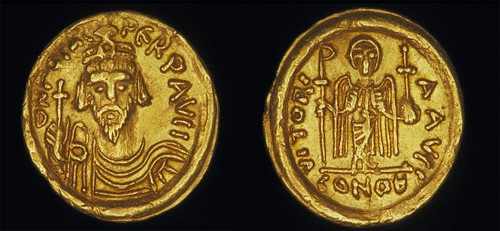 The Byzantine beard really begins with the coinage of Phocas. Sure, Roman emperors before him had some pretty substantial beards (I am particularly fond of Marcus Aurelius's facial hair), but it was under Phocas that beards began to be associated with manhood and even family lineage in Byzantium. His was the first imperial stubble on Byzantine coinage, setting a definite precedent for the jawline of emperors who followed after him 4. Leo III the Isaurian, 717–741: The best groomed of the Byzantine beards 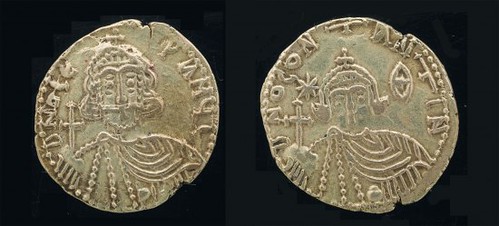 The rule of Leo III shares some significant similarities with the reign of another among the fabulous bearded rulers of Byzantium (see Beard #1). Another similarity is Leo III's serious facial hair. Definitely one of the more controlled chin-coifs, Leo III's beard (and reign) was cool, calm, and collected. With his mustache neatly sculpted, the emperor appears ready for anything—which was good, considering his actions against the Second Arab Siege of Constantinople was necessary immediately after taking over the empire. 3: Christ as depicted in the coinage of Michael III, 842–867: Most illustrious of the Byzantine beards. 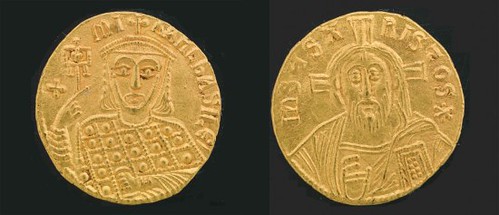 The iconography of Christ in Byzantine art is sublime, and the glory of this robust beard is no exception. Justinian II (of the Heraclian Dynasty) was the first emperor to depict Christ on coinage. While he was not the last to do so, the trend did not take off as he expected. Still, the iconography used to depict Christ is not lacking in his facial hair. This solidus is a gold coin about 23k fine, though gradually debased, that was minted during the reign of Michael III (and Theodora). It portrays Christ with a very notable Byzantine Beard. In fact, his goatee is a rather significant part of the composition and is mimicked in the depiction of Michael III on the back of the coin. 2. Constans II, 641–668: The most ZZ Top-like of the Byzantine beards 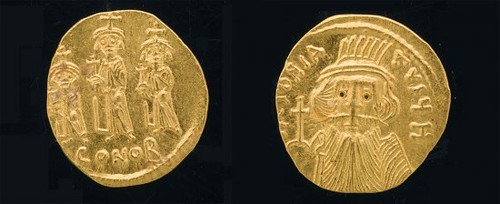 The massive beard of Constans II basically speaks for itself (his contemporary nickname was even Constantine the Bearded) and was in no small way a physical connection to his grandfather Heraclius (see Beard #1!). While the flowing facial locks of Constans II were long and luscious, his reign was not the most comfortable. His ascension to the throne was an event marred by regicide, court intrigue, and deep religious conflict, and the remainder of his reign had little more success. Honorable Mention: Leontius, 695–698: Just a really good beard 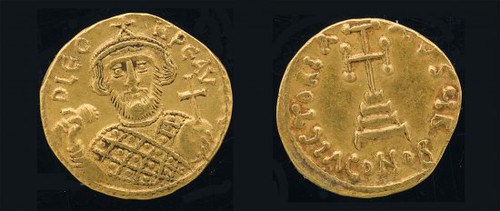 A good beard should never go to waste, and this solidus of Leontius depicts his really decent beard. He rose to power by overthrowing Justinian II (of the Heraclian Dynasty) after several great military successes. However, like his full beard, Leontius' reign was short and jagged. 1. Heraclius (Herakleios), 610–641: The most epic of the Byzantine beards 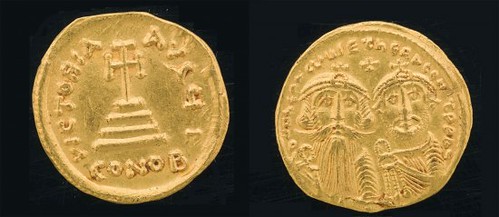 Heraclius's reign was just as big and dramatic as his fabulous facial hair. One of my favorite facets to coins of Heraclius is the development of his beard. As he excels in expansion and rule of Byzantium, his coinage portrays a more robustly bearded iconography—again, the beard really makes the emperor. He reorganized the administration of the empire just as he reorganized the flow of his powerful mustache. He even successfully used his coiffed and powerful beard to regain the True Cross of Christ, previously lost to the Sassanians during the reign of Phocas (see Beard #3). As Heraclius's beard grew more powerful and full on the coinage, his son Constantine III's stubble also developed into some serious five o'clock shadow. Who knew my father and my brother were part of such an illustrious history of wearing large, familial beards? For even more beards of Byzantium, check back soon to see our online exhibition of Byzantine coins! Emily Pearce Seigerman is a Museum Specialist with the National Numismatic Collection. She has also blogged about powerful empresses on coins. To read the complete article, see: 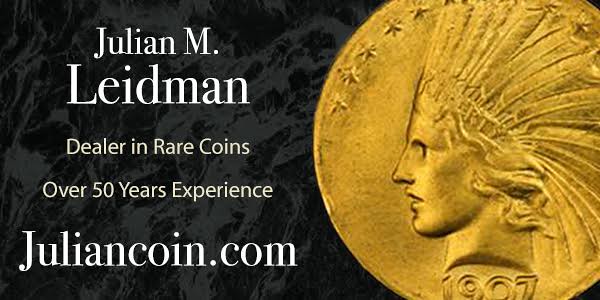 Wayne Homren, Editor The Numismatic Bibliomania Society is a non-profit organization promoting numismatic literature. See our web site at coinbooks.org. To submit items for publication in The E-Sylum, write to the Editor at this address: whomren@gmail.com To subscribe go to: https://my.binhost.com/lists/listinfo/esylum All Rights Reserved. NBS Home Page Contact the NBS webmaster 
|